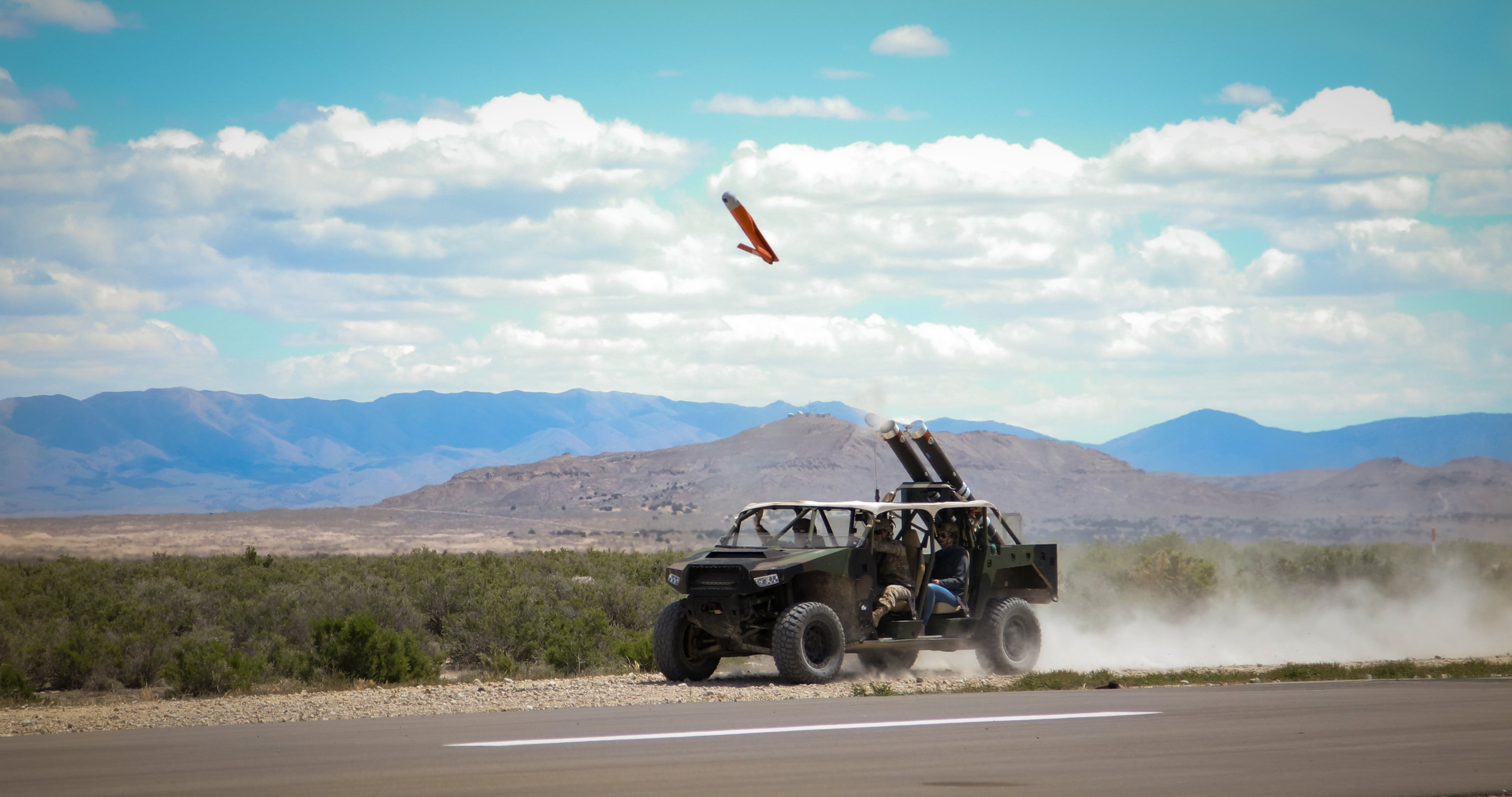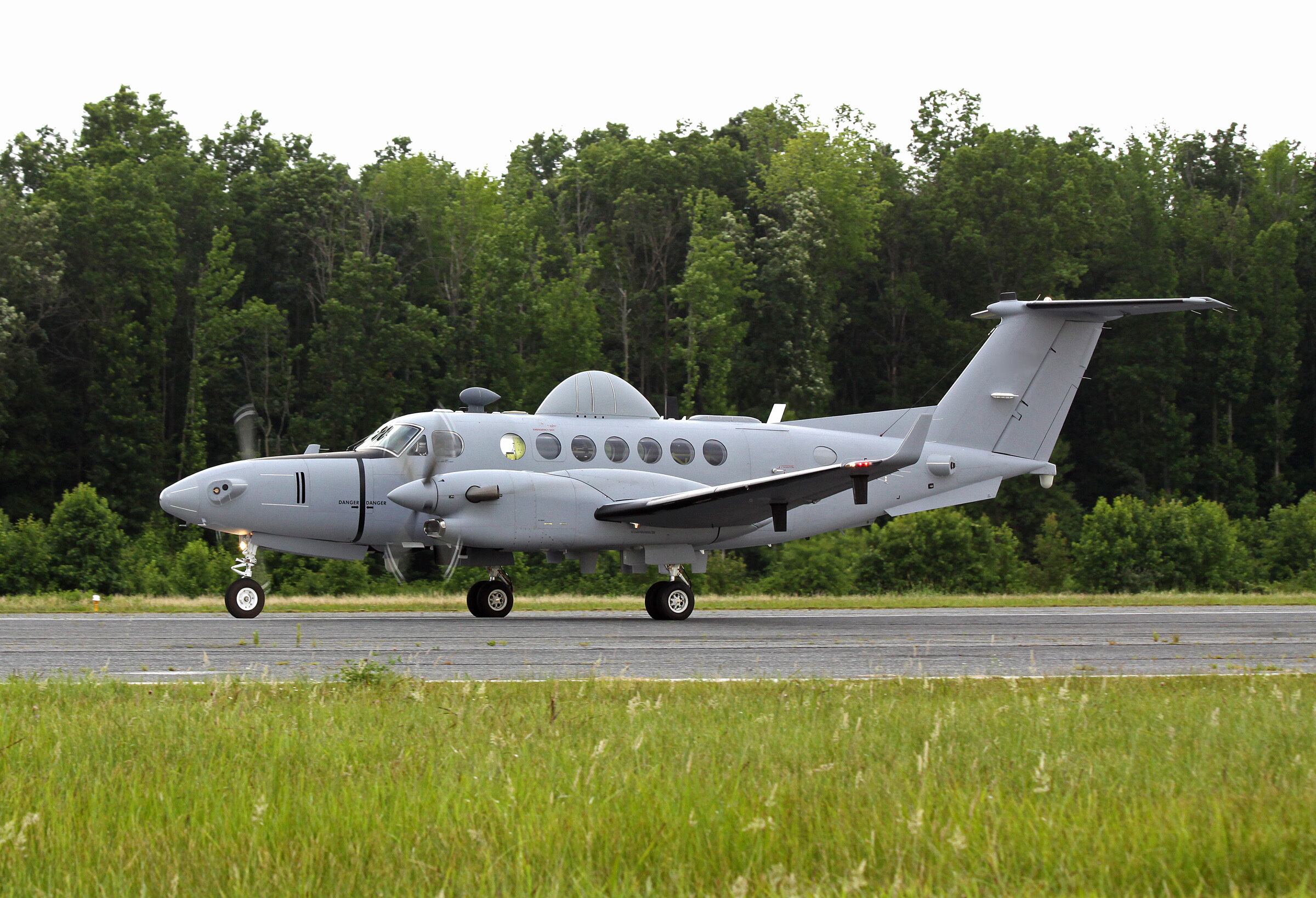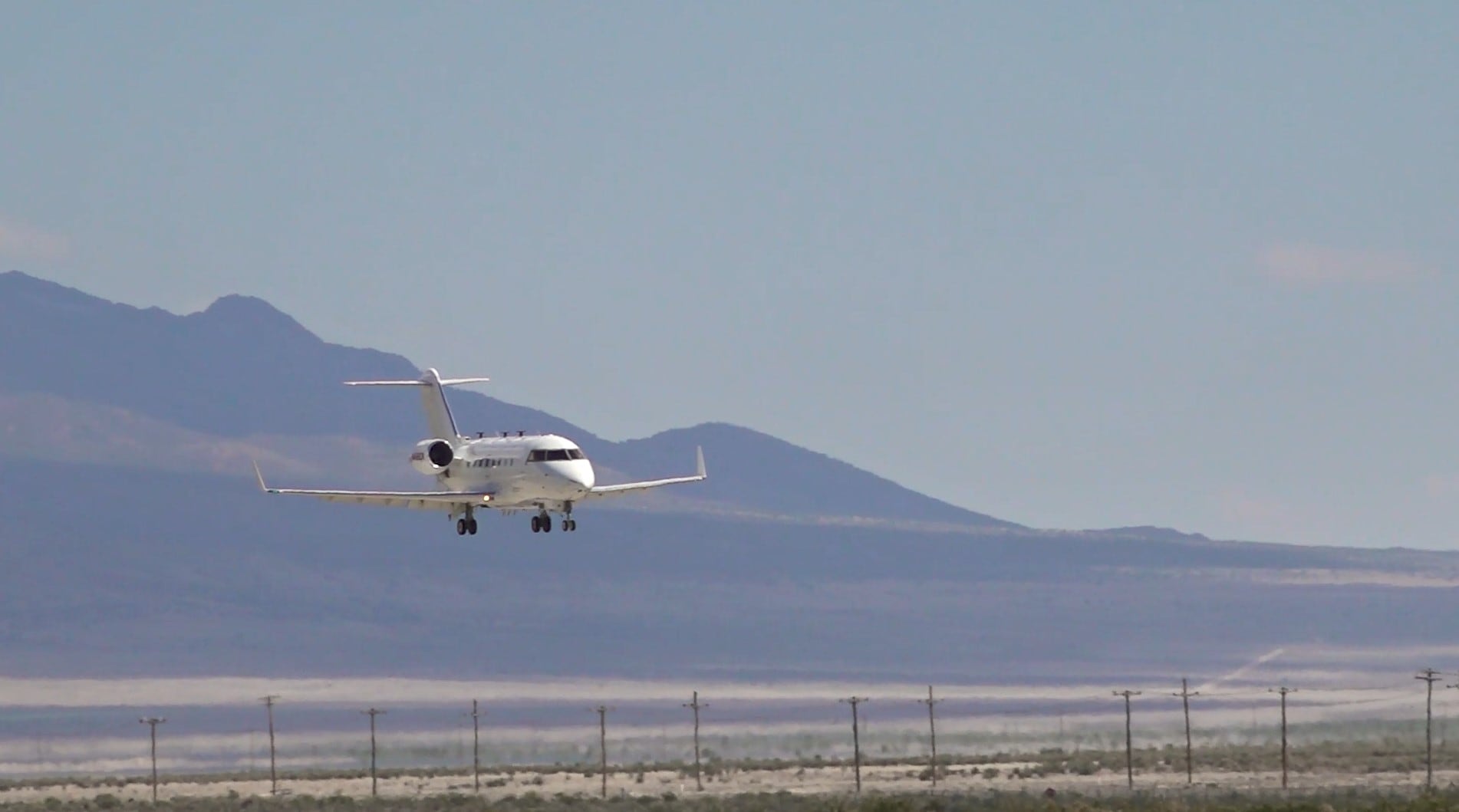WASHINGTON — An Army intelligence, reconnaissance and surveillance high-speed jet technology demonstrator — dubbed Artemis — has deployed to Europe to support the service’s Defender exercise and help assess what is in the realm of the possible for future ISR fixed-wing capability.
The service has significant obsolescence problems with its current fleet of Cold War-era Guardrail Common Sensor ISR aircraft deployed in both South Korea and Europe. The Army has reached a point where it is pulling parts from the boneyard to keep the aircraft operational, Col. James DeBoer, the Army’s project manager for fixed-wing aircraft, told Defense News in a recent interview.
“We’re getting to the point where we are just having significant issues with it,” he said, so the Army is trying to figure out how it will replace a required capability and what that future ISR aircraft will look like.
Artemis — or Aerial Reconnaissance and Targeting Exploitation Multi-Mission Intelligence System — is one effort among several to assess ISR capabilities for high-speed jets to possibly replace Guardrail, a turboprop aircraft based on the King Air.
The Army awarded a contract to Leidos in November 2019 to build Artemis using a Bombardier Challenger 650 jet. The plane has been assessed in the Indo-Pacific and European theaters and will undergo evaluation over the summer at Defender Europe, a division-sized exercise designed to test the service’s ability to deliver a force from the U.S. to Europe and then to operational areas throughout the continent.
“One of the things we saw, and we know that we’re concerned about with near-peer [adversaries], is we need to look at our sustainment, our ability to move around; so we did see one thing that came out the demonstrations is we can get to where we need to a lot faster,” DeBoer said of Artemis’ previous deployments in both theaters.
“It may take us five to seven days to get a turboprop over to Europe because you have to take the northern route. We just don’t have the legs. And if we’re going to go to Korea, it’s even longer because of the legs on the King Air type,” DeBoer said. “We can’t really make the jump to Korea from Alaska. We have to go the other way.”
Since those demonstrations, the Army has upgraded Artemis with better sensors, particularly communications sensors developed for Guardrail with the capabilities to talk over satellites and other direct and more reliable communications.
RELATED

Artemis recently participated in the service’s Future Vertical Lift exercise — Edge 21 — at Dugway Proving Ground, Utah, which was designed to prepare the aerial tier’s participation in Project Convergence this fall. The new communications sensors were tested at Edge 21.
Project Convergence has become the Army’s annual event that helps it assess how its capabilities under development are coming together to fight across all domains.
Artemis will return from Europe in time to participate in Project Convergence.
In Europe this summer, the Army will evaluate how the platform performs in terms of payload, range, ability to stay on station and ability for electrical power to support smarter sensors, DeBoer said.
The Army is also in the process of bringing online a second technology demonstrator called ARES — or Airborne Reconnaissance and Electronic Warfare System — after awarding a contract to L3Harris Technologies in November 2020 to build it and then fly it this summer. ARES is based on a Bombardier Global Express 6500 jet that will have a different signals intelligence package on it than Artemis, according to DeBoer.
While the name implies the technology demonstrator would have an electronic warfare capability, it won’t start out with the capability and may never have it, DeBoer noted.
The Army is also upgrading its Enhanced Medium Altitude Reconnaissance and Surveillance System, or EMARSS, with a newer King Air platform that includes enhanced sensors that could perform the Guardrail mission. The service awarded a contract to L3Harris and Sierra Nevada Corporation to do the integration work. That team is currently building the aircraft, and it is expected to fly in the middle of next year, according to DeBoer.

The Army will collect data from both the Artemis and Aries demonstrators as well as analysis from its EMARSS-E program (the “E” at the end stands for “Electronic Intelligence”). DeBoer’s office will take the information back to senior leaders to determine how to shape a possible prototyping effort, dubbed the High Altitude Detection and Exploitation System, or HADES, that could eventually turn into a program of record to replace Guardrail, the colonel said.
The service approved an abbreviated capabilities development document for the effort a year ago.
Moving to faster jets for the ISR mission has “certain advantages,” DeBoer said, “from just purely how quickly we can move them, maybe have fewer of them and maybe even have them back a little bit farther from the threat so that we can operate them in a safer environment.”
The ARES platform is larger and has more endurance, he said, as well as a lot more electrical capability and more payload capacity. “The conversation comes back to where’s the smart place to invest. How much payload do we need? We always want to look at the ability to grow over time, we always add more capability to aircraft.”
The Army’s office dedicated to fixed-wing aircraft was also recently tasked to explore the commercial world as well as science and technology advancements for a high-altitude, extended-range, long-endurance ISR observation capability using things like steerable balloons and solar gliders, DeBoer said.
While the service is in the nascent stages of analysis, it is calling the program HELIOS. For now, the fixed-wing office as well as the Army’s Program Executive Office Intelligence, Electronic Warfare and Sensors are assigned to work together on the project, according to DeBoer.
“We’re looking at this in addition to HADES,” he said, “but we’re not as far along in the process.”
The Army is talking to industry and labs around the country to check on the status of technology, DeBoer said. Once the fixed-wing office and PEO IEW&S come back with data, Army senior leaders will determine a way forward, which could include the development of an abbreviated capabilities development document and possibly technology demonstrators.
Jen Judson is an award-winning journalist covering land warfare for Defense News. She has also worked for Politico and Inside Defense. She holds a Master of Science degree in journalism from Boston University and a Bachelor of Arts degree from Kenyon College.




